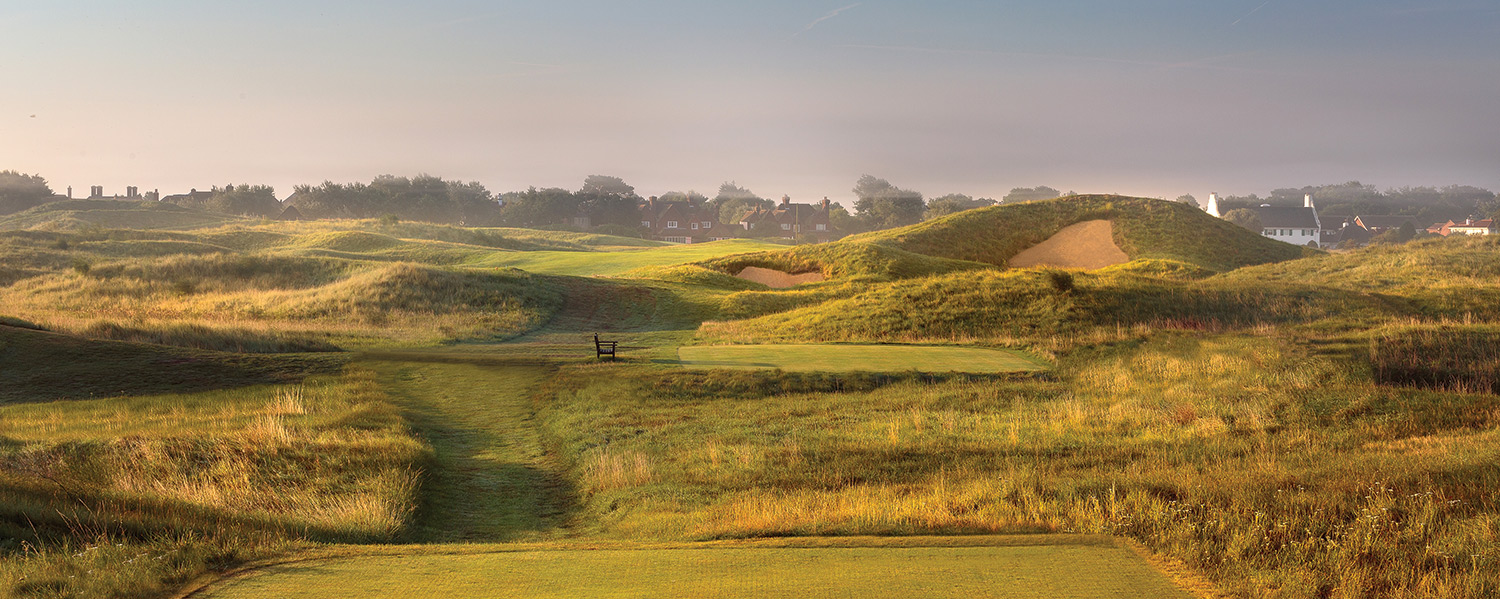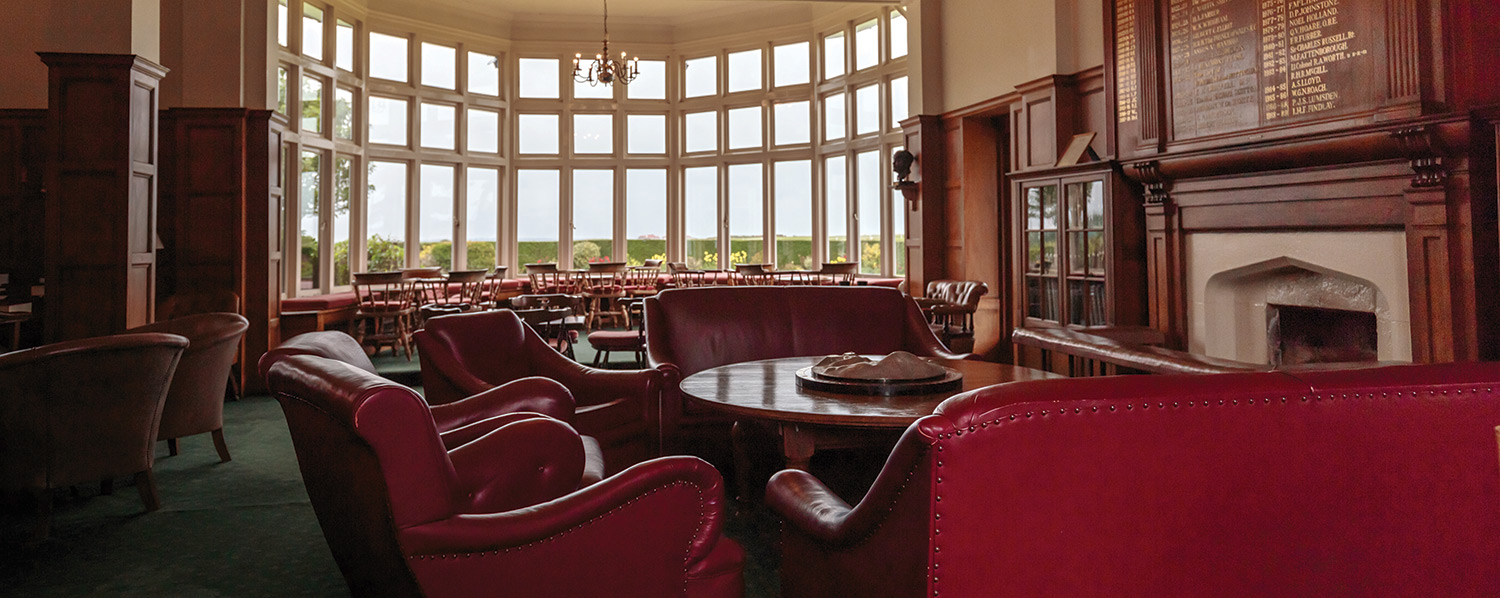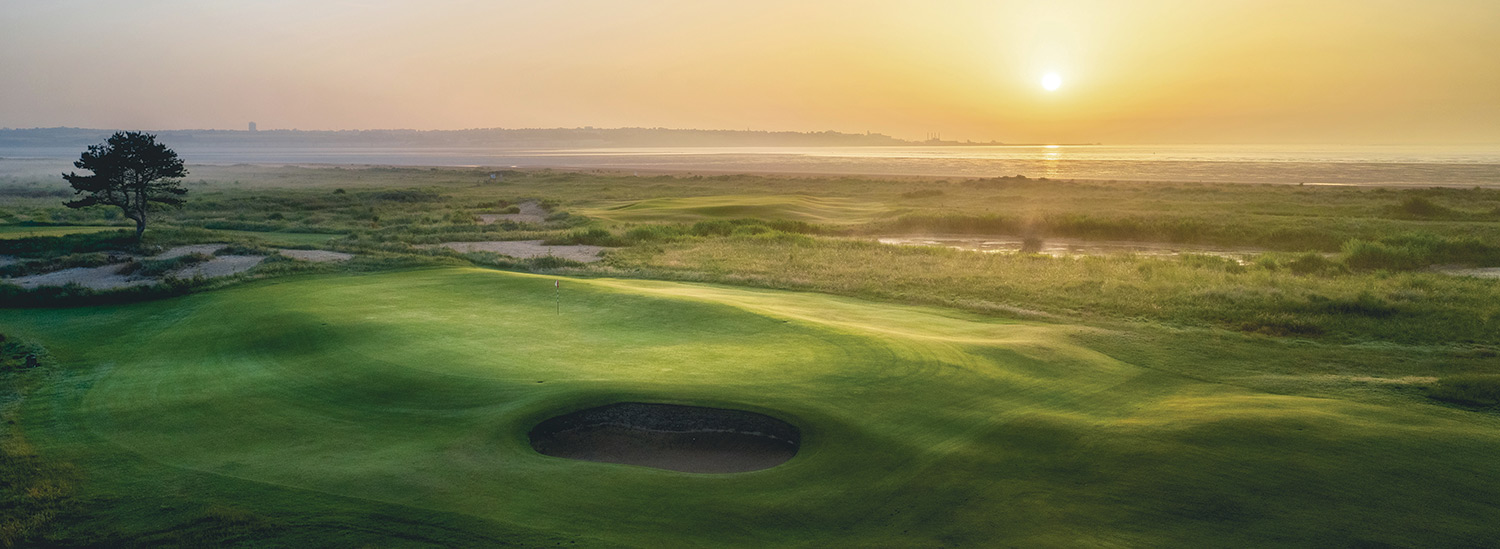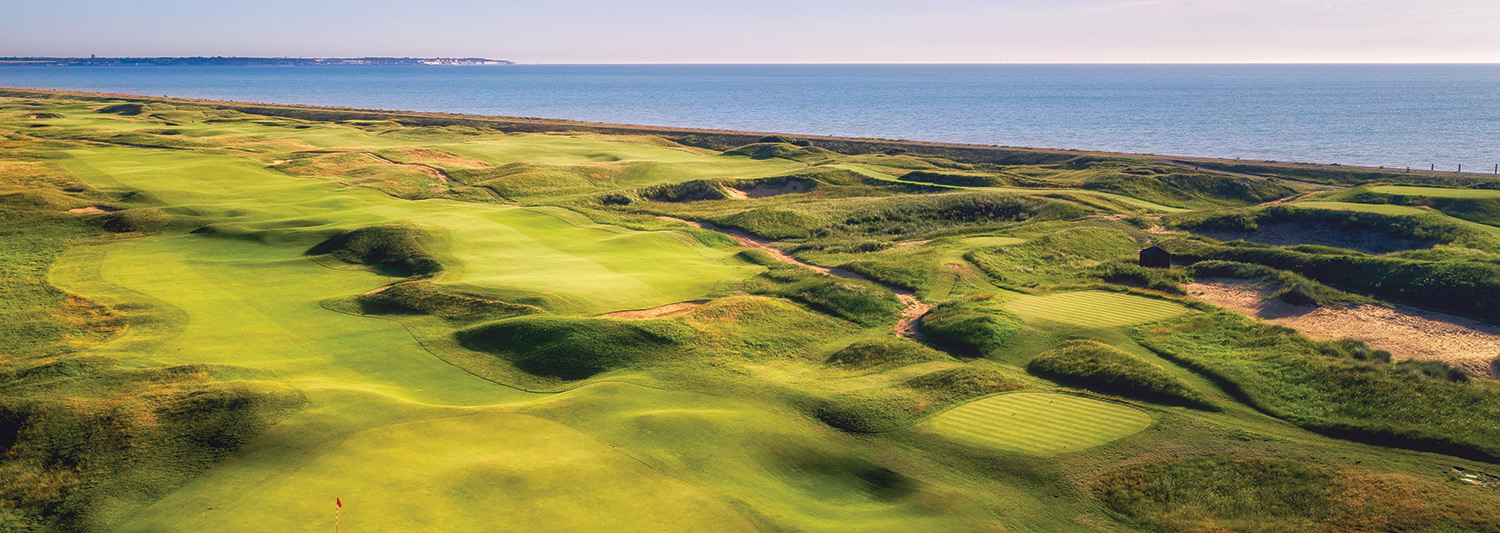
The Open returns to its southernmost post next summer, to Royal St. George’s in the medieval town of Sandwich, so Robin Barwick headed to the Kent coast to explore its links heritage
There has always been a healthy edge between the English and the Scots. It goes right back through Robert the Bruce, back to the Romans building Hadrian’s Wall.
In more civilised times in the late 19th century, as the “Scottish game” was spreading fast through England and across the Atlantic, England’s emerging golf establishment peered over the border with envy at The Open, which was inaugurated at Prestwick in 1860. The Open was created to establish, on an annual basis, who was the best golfer of them all, regardless of age, profession, nationality or religion, and the first 33 chapters of The Open were all held in Scotland; at Prestwick, then St Andrews, Musselburgh and eventually Muirfield took its turn. It took 30 Opens for an Englishman to finally win the Claret Jug for the first time—John Ball, from Hoylake, who was also the first amateur to win the title—and the English might not have wanted to own The Open outright, but they certainly wanted their turn to host it.
It was with The Open in mind that William Laidlaw Purves—an acclaimed Scottish surgeon who lived and worked in London and who was a member of both the R&A and the Honorable Company of Edinburgh Golfers (Muirfield)—climbed the winding stone steps to the top of the tower of the 12th century St. Clements Church in Sandwich. He wanted to survey the coastal landscape for a plot on which a links golf course could be established. Between the winding River Stour and Sandwich Bay—from where the next stop heading east is Dunkirk—Purves saw the stretch of nobbled, rolling linksland he was after. His search had taken in 200 miles of England’s south coast, and here, finally, so taken was this Scot with the broad expanse in front of him that he was convinced he could create England’s answer to St Andrews.
Purves laid out a majestic 18 holes—which to this day remains the most spacious of all venues for The Open—which opened in 1887. Named after the patron saint of England, only seven years later Purves’ ambition was fulfilled when Royal St. George’s became the first golf course outside Scotland to stage The Open.

Despite its walking distance from the medieval market town of Sandwich, there is a remoteness and tranquillity about Royal St. George’s which is only really compromised when The Open trundles down the club’s understated, narrow approach between a pair of flat and unremarkable fields, as it will for the 15th time in July 2021 (more than any other course south of the border). If you were to take in the eastward view from the tower at St. Clements today it would seem much as it did to Purves more than a century ago. Part of the appeal of St. George’s is the feeling of escape from the modern world—in the traditional clubhouse as well as out on the links—and a sense of timelessness is palpable.
St. George’s is a demanding golf course, with some long carries from tees and a handful of blind tee shots to unnerve those less familiar with its singular charms. Golf balls that land in the centre of its fairways can be led an irregular dance by all its bumps and hollows that are virtually peerless on The Open rota. They bring unpredictable punishment to a round of golf but that is integral to links golf, although not to every golfer’s liking, particularly those to whom driving consistency has been a cornerstone of success. Ahead of the 2011 Open at St. George’s, Gary Player—three times The Open champ but never at this Kentish links—was asked what he thought were the qualities of this mercurial golf course. A straightforward question but Player would utter nothing more than, “Next question please,” through gritted teeth. It was particularly arresting coming from a man who is usually so forthcoming with his views on everything.

“From any tee out here, par is a very good score,” starts Justen Fiddler, club professional at St. George’s, and like Purves, a man who honed his golf much along the shoreline of East Lothian. “You just have to be very patient. You have to plot your way around the course. Birdies do not come along too often but bogeys do. You don’t have to hit a bad shot to produce a bogey. Par is always a good score.”
When St. George’s played to a full length of 7,211 yards for its last Open in 2011, when Darren Clarke won in terrible weather, St. George’s became the longest par-70 golf course to stage The Open. Like it has done a few times in recent years, for 2021 and hopefully with the Coronavirus dead and buried, the R&A is expected to pull back the yardage just slightly, to around 7,204 yards. This golf course is sufficiently difficult as it is.
“At Royal St. George’s the holes never run along in one direction,” adds Fiddler. “All 18 holes are very individual, with cross winds on a majority of holes, so the course does suit someone who can control the flight of his ball, shape his shots, putt well and chip well.”
Only once has a golfer won The Open at St. George’s with a score that was under par by double digits and that was Greg Norman in 1993, with one of the finest final rounds ever played—a 64, six under par. He finished on 267, 13 under par, to beat Nick Faldo by two after Faldo had set a new course record of 63 in the second round (which was matched by Payne Stewart on the Sunday).
“For Greg Norman to shoot 64 here in the final round in 1993—and he missed a short putt on 17—that was just a great, great round of golf,” recalls Fiddler, who started at Royal St. George’s as an assistant pro in 1997, before taking the club pro job in 2012. “Norman’s round was remarkably good. He drove the ball arrow straight all week. It was an amazing four days of golf at the very highest level.”

Laddie Lucas was a fighter pilot for the Royal Air Force in the Second World War, a wing commander based for a spell at RAF Manston, near Sandwich, who flew Spitfires over the English Channel to fight the German Luftwaffe.
Born in 1915, Lucas grew up on Prince’s at Sandwich, a golf course that his father Percy Lucas had co-founded in 1904 and which sits immediately to the north of Royal St. George’s, the two golf courses separated by a modest wire fence. Laddie Lucas became a golfer of international caliber, the left-hander winning the British Boys Championship in 1933 and later representing Great Britain and Ireland in the Walker Cup. But then came the war and the British Army commandeered the golf course at Princes for mortar practice.
One day in July 1943, returning from a mission over northern France, Lucas’ Spitfire was hit by enemy fire and halfway back across the English Channel, with his cockpit filling with smoke, his engine cut out. Losing altitude and wondering if he could reach the shore, Lucas spotted the Prince’s clubhouse in the distance—where he had been born, in a room overlooking the first tee—and made a bid to land on one of the fairways. Reportedly a wayward driver of the golf ball, Lucas touched down on the fourth tee of the Himalayas nine before coming to rest out of bounds at the northern end of the course. Henry Longhurst, the renowned golf writer and commentator, was close friends with Lucas and promptly dispatched a telegram to him which simply read: “Driven out of bounds again Lucas”.

A propeller mounted on a post today marks the spot when Lucas’ plane finally came to a halt, which is near a newly built par-three fourth hole on the Himalayas nine at Prince’s.
As is so often the case around the British coastline, where there is one great links golf course you find a cluster. Like Royal St. George’s, Prince’s boasts Open heritage, having staged the championship in 1932—won by Gene Sarazen with his newly invented sand wedge—while no more than a mile to the south of St. George’s begins the mighty links of Royal Cinque Ports, which also proudly hosted The Open, in 1909 and 1920.
Prince’s has three nines—Himalayas, Shore and Dunes—and while they overall offer a gentler links test than their neighbors, extensive renovations and improvements of all three nines, under the guidance of course architects and links specialists Mackenzie and Ebert, will be complete this year and leave the golf courses looking and playing better than ever. Drainage has been improved and the links nature of the land is being embraced by opening up sand scrapes between holes.

“We have been delighted to continue our involvement at Prince’s,” says architect Martin Ebert. “Having the opportunity to provide design input to the Shore and Dunes has led us to enjoy an even greater respect for the quality of the detailed shaping of the greens and green surrounds at Prince’s. The original work of Sir Guy Campbell and John Morrison in restoring Prince’s as a great golf course after the Second World War was fantastic. It has been a great honour to have followed in their footsteps.”
Princes also provides 38 guestrooms in its Lodge, which are ideal for visiting golfers in an area of Kent with limited accommodation options.
Down the beach from Sandwich is Royal Cinque Ports Golf Club by the town of Deal (the club is named after the ancient Confederation of Cinque Ports along this coastline, the five ports being Sandwich, Dover, Hythe, New Romney and Hastings). Golf writer and links connoisseur Donald Steel knows Cinque Ports intimately and while it might seem unkind that he has described this golf course as “more bleak than most”, there is certainly a rawness to its remote setting. “Deal”, as the club is often known, opened five years after St. George’s in 1892 and provides a classic links scenario: there is the beach and the sea on one side, to the east, two nines of golf that run up and back, more or less parallel to each other, in an anti-clockwise order (like the Old Course, St Andrews), while inland from the course the land flattens out into farmland. The inland views from the golf course can be barren and desolate, it is true, yet these ribbons of golf between the farms and the beach provide an incredibly rich seam of sport.
Deal does not have the space of St. George’s for hosting The Open to its modern-day scale, but the golf course remains of Open caliber from beginning to end. The most famous Open story at Deal in fact occurred off the golf course and in front of the main entrance to the clubhouse, where Walter Hagen had his chauffeur-driven Daimler parked for the 1920 Open. This was the first championship following the end of the First World War, in an era when many traditional golf clubs did not allow professionals into the clubhouse. International superstar Hagen was insulted, and so changed his shoes in his car in front of the clubhouse in protest. At the end of play, it is said that Hagen’s chauffeur brought drinks for Hagen and his playing partners to the side of the 18th green on a silver tray in a further act of defiance.

For the travelling golfer, this exceptional triumvirate of golf courses can be expanded into a quartet with a 30-mile drive from Deal, following the south-westerly coastline to New Romney and the understated links of Littlestone. Purves, who created Royal St. George’s, laid out the links at Littlestone with professional David Herd just a year after St. George’s and became the club’s inaugural captain in 1888. The course was later improved by Alister MacKenzie, who would go on to collaborate with Bobby Jones at Augusta National.
Like Prince’s, Littlestone offers an excellent links challenge and some memorable holes without reaching the unforgiving demands of St. George’s and Deal. There are less forced carries here and less blind shots but as with any genuine links, its greatest defence is the wind. If the breezes pick-up at Littlestone, the golf course twists and turns so that golfers must re-calculate on virtually every hole, and the course builds to a crescendo with its three outstanding closing holes. While Littlestone has not hosted The Open like its nearby cousins it does have an extensive tournament heritage that dates back to the first Ladies Golf Union Championship back in 1894, and it was set to reach peak condition to host the R&A’s Junior Open in July until it was cancelled.
Purves did not create a southern equivalent to St Andrews—an impossible task from the outset—but even though Gary Player might disagree, the links of Royal St. George’s is the equal of the Old Course or any other as a golfing challenge, and an exceptional spread of golf awaits between these four Kentish corners.
Follow Us On


| Cookie | Duration | Description |
|---|---|---|
| cookielawinfo-checkbox-analytics | 11 months | This cookie is set by GDPR Cookie Consent plugin. The cookie is used to store the user consent for the cookies in the category "Analytics". |
| cookielawinfo-checkbox-functional | 11 months | The cookie is set by GDPR cookie consent to record the user consent for the cookies in the category "Functional". |
| cookielawinfo-checkbox-necessary | 11 months | This cookie is set by GDPR Cookie Consent plugin. The cookies is used to store the user consent for the cookies in the category "Necessary". |
| cookielawinfo-checkbox-others | 11 months | This cookie is set by GDPR Cookie Consent plugin. The cookie is used to store the user consent for the cookies in the category "Other. |
| cookielawinfo-checkbox-performance | 11 months | This cookie is set by GDPR Cookie Consent plugin. The cookie is used to store the user consent for the cookies in the category "Performance". |
| viewed_cookie_policy | 11 months | The cookie is set by the GDPR Cookie Consent plugin and is used to store whether or not user has consented to the use of cookies. It does not store any personal data. |